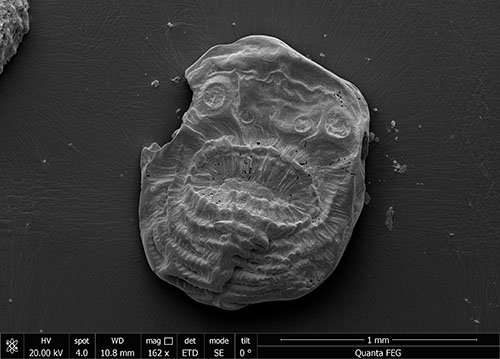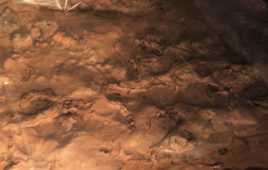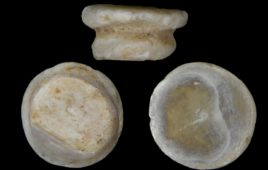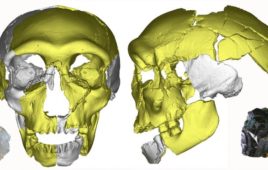
Photographs of the fossils show the spectacularly detailed levels of preservation which allowed researchers to identify and study the creature. Credit: Jian Han.
Researchers are investigating a tiny sea creature identified from fossils that is thought to be the earliest step on the human evolutionary path.
The fossil, which was found in China, has traces of what researchers believe is the earliest known prehistoric ancestor of humans—a microscopic, bag-like sea creature, which likely lived between grains of sand on a seabed about 540 million years ago.
The study was conducted by a team of researchers from the University of Cambridge in the U.K. and Northwest University in China with the support of other institutions in Germany and China.
Simon Conway Morris, professor of Evolutionary Palaeobiology and a Fellow of St John’s College, University of Cambridge, said the fossil represents the beginnings of several species.
“We think that as an early deuterostome this may represent the primitive beginnings of a very diverse range of species, including ourselves,” Conway Morris said in a statement. “To the naked eye, the fossils we studied look like tiny black grains, but under the microscope the level of detail is jaw-dropping.”
The species, dubbed Saccorhytus, is new to science but is thought to be the most primitive example of a deuterostome—a broad biological category that encompasses a number of sub-groups including vertebrates.
The researchers believe that Saccorhytus was the common ancestor of a large range of species and the earliest step discovered on the evolutionary path that eventually led to humans.
Because the creature is so diverse, researchers had a difficult time piecing together what it might have looked like.
However, they were able to isolate the fossils from the surrounding rock and then study them under an electron microscope. Using a CT scan, researchers build a picture of how Saccorhytus might have looked and lived.
Degan Shu, a professor from Northwest University, said researchers will be able to learn more about create, as well as humans.
“Our team has notched up some important discoveries in the past, including the earliest fish and a remarkable variety of other early deuterostomes,” Shu said in a statement. “Saccorhytus now gives us remarkable insights into the very first stages of the evolution of a group that led to the fish and ultimately, to us.”
According to the study, the creature’s body was bilaterally symmetrical—a characteristic inherited by many of its descendants, including humans—and was covered with a thin, relatively flexible skin.
It also had a large mouth and likely ate by engulfing food particles or other creatures.
The study was published in Nature.




